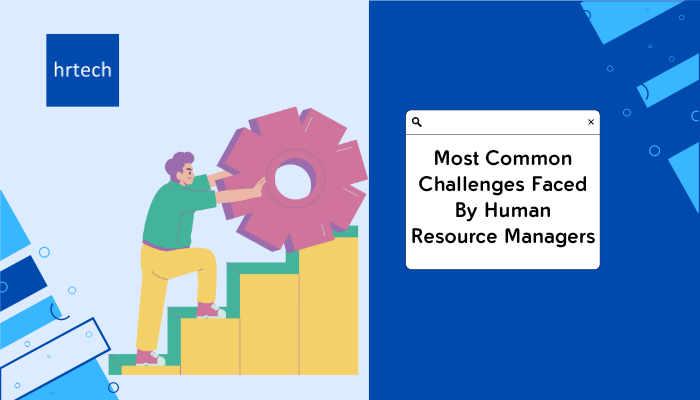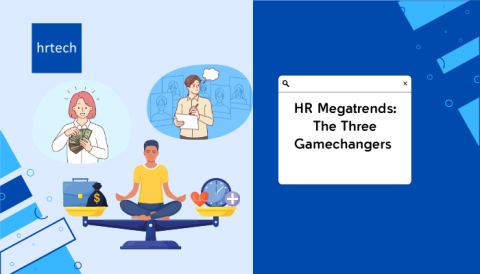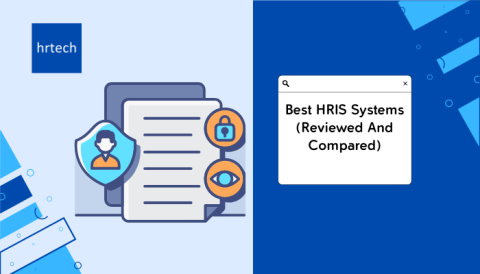HR managers face a lot of challenges on a daily basis. From employee retention to budget limitations and inefficient tools, the list goes on.
In this guide, we cover the 11 most common challenges for human resources managers, along with best practices and tips to effectively handle them.
Let’s get started!
Top 11 Challenges For Human Resource Managers
1. Employee Retention
Keeping good employees is one of the hardest things HR managers have to deal with. It’s tough to make people feel appreciated, especially when bonuses and gifts aren’t that big.
For instance, giving someone an extra 15-minute break or a Top Performer badge isn’t just enough. Small appreciation like gift cards, free lunches, or more vacation days also wear off quickly. What workers really want is to be fairly paid and truly valued for their contributions.
Here are some of the top employee retention strategies and best practices:
- Competitive base pay plus performance incentives
- Great healthcare, better retirement plans, and other core benefits
- Ample paid time off for vacations, illness, and personal needs
- Clear paths for advancement and professional development
- Diversity and inclusion initiatives to make everyone feel welcomed
- Focus on employee mental health and work-life balance
- Fun, engaging team-building events
- Influential employee recognition programs to celebrate wins
And interestingly, as the work environment is evolving rapidly with the remote work culture on the rise, there are many new challenges for human resource managers.
How do you keep remote team members feeling connected and well-compensated? HR has to get creative. Virtual events, care packages, and extra paid days off can help. The real key is consistent, meaningful communication that shows remote workers they matter. But the list doesn’t end here.
2. Understaffing And Hiring Top Talent
Being understaffed makes it very difficult for HR leaders to manage their teams effectively. Without enough team members, even the most capable HR managers will struggle to succeed.
Widespread labor shortages, especially lack of trained and skilled workers is one of the major issues. Working understaffed means there will be more workload on existing employees—which can eventually lead to stress, burnout, and poor work-life balance.
Furthermore, the competition for attracting top talent is always high in any industry. The HR Manager has to handle all these effectively, which can be challenging.
But here are some of the best practices to overcome these challenges:
- Use employee referrals. Existing employees can act as the best recruiter for your company. So encourage them to refer great candidates with bonuses and other incentives.
- Simplify the hiring process. Remove all the unnecessary steps that slow things down and start using tech tools to screen resumes or schedule interviews efficiently.
- Make your requirements flexible. In a tight job market, it’s important to have flexibility options like remote work, or flexible work hours.
- Upskill current staff. If hiring top talents seems challenging, then don’t worry. Just start enhancing the skill sets of your existing employees.
3. Budget Limitations
Money problems are a big obstacle for many HR departments.
When there’s not enough cash, it’s really hard to pay people as much as they deserve. This makes it tougher to get and keep the best workers.
Imagine you’re an HR manager at a company with 500 employees. You know your pay rates are lower than other similar businesses in the area. You’d love to bump everyone up by 10% or more to match the market. But the owners say there’s just no room in the budget.
In a study, 61% of HR managers said that budget cuts can directly affect employee performance in an organization.
Having messy, unfair pay scales is another common money issue. Maybe one department pays a lot more than another for similar work. Or new hires are getting bigger salaries than loyal longtime staff.
These inconsistencies in compensation are worth considering. If an employee finds out their coworker earns 20% more for the same job, morale takes a huge hit.
In a survey of more than 2600 employees, the most common reason why employees quit—after poor work-life balance—was unfair pay. Here’s an overview of what those employees highlighted in the survey as their most common reasons for leaving:
Working with a small budget is never easy. But here are some effective ways to make the most out of limited funds:
- Offer low-cost perks like remote work days, casual dress codes, or free snacks.
- Give more paid time off instead of raises.
- Provide on-the-job training and development opportunities.
- Create a recognition program to celebrate employee achievements.
- Negotiate better group rates on health insurance and other benefits.
- Partner with local businesses for employee discounts on things like gym memberships or meal delivery.
The key is to focus on the total package, not just base pay. Little extras can add up to a lot. An extra week of vacation or $50/month toward student loans may be more doable than a 5% raise.
4. Compliance Issues
Dealing with all the rules and laws is one of the biggest headaches for HR. There are so many regulations to follow, from equal employment laws to workplace safety standards. It’s a lot to keep track of.
Common compliance issues include:
- Misclassifying workers as contractors instead of employees
- Not paying overtime properly
- Failing to provide required leave
- Not keeping records up to date based on the latest regulation changes
- Overlooking safety hazards in the office
Getting compliance wrong is more than a hassle. It can cost a company big time. Fines, lawsuits, and damage to your reputation add up fast.
Even small mistakes matter. Using the wrong wording in an employee handbook or skipping a required training can lead to problems down the road. Part of why compliance is so hard is that the rules are always evolving. Laws get updated, new regulations come out. Staying on top of it all is a never-ending job.
Here are some tips and best practices for HR Managers to overcome compliance issues:
- Make compliance a priority, not an afterthought. Bake it into every HR process and decision.
- Stay informed on the latest laws and regulations. Read up on changes, attend webinars, and consult with legal experts.
- Train managers and employees on the rules. Make sure everyone knows what’s expected of them.
- Keep meticulous records. Document everything from hiring to performance reviews to terminations.
- Conduct regular audits. Review your policies and practices to spot any compliance gaps.
- Have a solid reporting system. Make it easy for employees to raise concerns and report violations anonymously.
- Act quickly when issues arise. Investigate thoroughly and take appropriate action to fix problems and prevent future ones.
5. Lack Of Training For Managers
Did you know that 5 in 10 HR managers take jobs that are outside their field of expertise? Too many managers are thrown into the job without any real preparation. They’re expected to lead a team, but no one teaches them how. So they muddle through, learning as they go.
This approach is bad for the entire business and affects growth in the long run. For instance, an untrained manager might avoid giving feedback, which can lead to problems later on. Or, they might micromanage their team that affects team productivity and morale.
When managers are not given the training on skill sets they need to lead, it reflects in their work. Teams with poorly trained managers often lead to high turnover rates, lower engagement, and overall worse results.
And here’s the thing:
Managing people today is harder than ever. The workplace is constantly changing, and leaders have to change with it. What worked for managing a team 10 years ago won’t be as effective now. Managers need ongoing training to keep up with evolving best practices. A one-time seminar isn’t enough.
Here are some top strategies to set HR managers up for success:
- Start leadership training early. Teach management skills to high-potential employees long before they get promoted.
- Make it ongoing. Provide continuous learning opportunities, not just a single class.
- Blend formats. Mix classes, workshops, mentoring, and on-the-job learning for maximum impact.
- Focus on soft skills. Teach things like communication, conflict resolution, and emotional intelligence.
- Tailor training to your culture. Align development with your company’s values and goals.
- Measure results. Track key metrics like retention and engagement to see what’s working.
6. Rebuilding Team Culture
Taking over a team with an already destroyed culture is one of the hardest challenges of Human Resource Managers. When you’re leading a group that’s been poorly led, mistrust and bad habits are deeply ingrained. Turning things around is a huge challenge.
Remote work has made this even tougher. It’s hard to build a positive vibe when everyone’s scattered and communicating mainly through screens. The lack of face-to-face interaction makes it harder to spot problems and fix them right away. High turnover also makes cultural change a bit challenging. Every time someone leaves, a little piece of the team fabric frays. And it takes time for new hires to adapt with the company culture.
So how do you fix a broken team culture? It’s not easy, but it can be done with the right approach:
- Start with a clear vision. Define the values and behaviors you want to cultivate. Make sure everyone knows what the new culture looks like.
- Model the change from the top. Leaders have to walk the walk, not just talk the talk. Their actions set the tone for everyone else.
- Communicate constantly. Reinforce your cultural message in team meetings, emails, and one-on-ones. The more you talk about it, the more it will stick.
- Celebrate wins along the way. Recognize people who embody the new culture. A little appreciation goes a long way.
- Hire for culture fit. Look for candidates who share your values and will thrive in the environment you’re building.
- Address bad behavior swiftly. Don’t let toxic attitudes or actions slide. Show that the old ways won’t be tolerated anymore.
- Be patient. Cultural change doesn’t happen overnight. It takes consistent effort over time to make it stick.
Rebuilding a positive culture is one of the most important things HR can do. A strong, healthy culture drives engagement, performance, and retention.
7. Lack Of Proper Communication From Higher Management
When leaders aren’t on the same page, it creates chaos for HR. Conflicting messages and priorities make it impossible to move forward. Imagine a company where all the top leaders are pulling in different directions with their decisions. There’s no clear strategy or goals.
This disconnect at the top trickles down to every level. Managers don’t know what’s expected of them. Employees get mixed signals about what matters most. A lot of confusion occurs.
When senior leaders and key decision makers of an organizations don’t communicate properly, here’s what happens:
- Misalignment between departments
- Duplication of efforts and wasted resources
- Frustration and disengagement among employees
- Slower decision making and execution
- Damage to the company’s reputation and brand
So what can HR do to improve communication from the top? Here are some tips:
- Push for a clear, and complete strategy. Encourage leaders to align on priorities and goals. Get everyone rowing in the same direction.
- Establish regular communication channels. Set up weekly or monthly leadership meetings to share updates and solve problems.
- Create a communication calendar. Plan out key messages and initiatives to ensure consistency and coordination.
- Train leaders on effective communication. Teach them how to share information clearly and persuasively.
- Hold leaders accountable. Make good communication a key part of their performance evaluations and incentives.
- Encourage transparency. Push for open, honest communication at all levels.
8. Ensuring Team Accountability
Holding people responsible for their work isn’t easy. Even with the best intentions, many teams struggle with accountability. The problem is, without real accountability, performance starts suffering. So why is accountability so hard?
Here are some common reasons:
- Unclear expectations. If people don’t know exactly what they’re supposed to do, they can’t be held responsible for doing it. Data shows that 6 in 10 people aren’t even clear what’s exactly expected from them in the job.
- Lack of follow-through. It’s not enough to set expectations upfront. You have to constantly check in and hold people to them.
- Inconsistent consequences. If there’s no clear link between actions and outcomes, accountability breaks down. People need to see that their choices matter.
Cultivating true accountability takes more than a few tactics. It requires a fundamental shift in mindset and culture. Here are some effective strategies and best practices:
- Start with clear expectations. Put them in writing and have people confirm they understand.
- Check in regularly. Don’t wait until the end of a project to see how things are going. A simple “how’s it going?” email can work wonders.
- Celebrate successes. Recognize people who consistently deliver on their promises. A public kudos goes a long way.
- Follow through on consequences. If someone misses a deadline, make sure there’s a real impact. Maybe they have to stay late to finish or take on an extra task.
- Focus on accountability daily. Weave it into your team messaging. Make it a core part of who you are, not just a one-time initiative.
Creating a true culture of accountability takes time and persistence. You have to make it a priority and keep at it, day after day. But the payoff—in performance, morale, and results—is more than worth it.
9. Employee Wellbeing And Safety
Keeping workers healthy and safe is a major challenge for HR. When employees are stressed, burnt out, or unsafe, everyone suffers. People disengage, performance drops, and healthcare costs rise.
Did you know? Because of stress, every day, 1 million employees in America remain absent. Employee well being and safety is so important because healthier employees are happy employees. They show up to work more often and are more productive, which leads to overall growth of the organization.
Here are some top strategies and best practices to ensure employee health and safety:
- Make mental health a priority. Offer resources like stress management training, and leadership check-ins.
- Encourage healthy habits. Provide gym discounts, healthy snacks, and incentives for wellness activities. Lead by example.
- Support work-life balance. Offer flexible schedules, generous PTO, and family-friendly policies. Encourage people to unplug outside of work.
- Create a psychologically safe culture. Foster an environment where people feel comfortable speaking up, taking risks, and being themselves.
- Prioritize workplace safety. Conduct regular safety audits, provide protective equipment, and swiftly address any hazards.
- Train managers to spot issues. Teach leaders how to recognize signs of stress, anxiety, or substance abuse in their teams and how to respond.
- Measure and adjust. Use employee surveys, health metrics, and safety data to gauge your progress and identify areas for improvement.
10. Developing Leaders
Growing leaders from within is one of the most important things HR can do. But it’s also one of the hardest.
Many companies struggle to create a strong leadership pipeline. They hire outside candidates for top roles instead of promoting from within. Or they put new managers into the deep end without any training or support. The result? High turnover, low morale, and a lack of continuity in leadership.
Neglecting leadership development is shortsighted. Your current employees are your best asset. They already know your business, your culture, and your goals. So, investing in their growth is the best decision for any company.
In fact, according to studies, employees performed 20% better in their job roles after they went through leadership training. So leadership development is an important challenge that HR managers need to handle effectively to ensure company growth in the long run.
Here are some the best practices for developing leaders:
- Start early. Identify high-potential employees and start grooming them for leadership roles long before they’re needed.
- Focus on soft skills. Technical expertise is important, but leadership is all about people skills. Teach things like communication, emotional intelligence, and conflict resolution.
- Provide ongoing training. Leadership development isn’t a one-and-done event. It requires continuous learning and growth.
- Give stretch assignments. Challenge emerging leaders with projects and roles that push them out of their comfort zone.
- Offer mentoring and coaching. Pair rising stars with experienced leaders who can guide and support them.
- Develop a feedback culture. Encourage open, honest feedback at all levels to help leaders grow and improve.
- Celebrate successes. Recognize and reward employees who step up and demonstrate leadership, even in small ways.
11. Inefficient Tools And Systems
Few things frustrate managers more than clunky, outdated tools and systems. When the software you use to do your job is hard to use, it’s a daily drain on productivity and morale.
Many companies are quick to adopt the latest and greatest technology. But they often fail to think through the effects for end users. They roll out new systems without proper training or support. Or they choose tools that don’t fit the needs and workflows of the teams who will use them.
The result is a patchwork of poorly integrated systems that create more problems than they solve. Managers spend way too much time handling technology instead of leading their teams.
Here are some of the best practices to overcome this challenge:
- Involve end users in technology decisions. Don’t just leave it to the IT team. Get input from the people who will actually use the tools day-to-day.
- Prioritize usability. Look for tools with intuitive interfaces and easy learning curves. The best technology is technology you barely notice.
- Provide ample training and support. Don’t just put new tools on people and expect them to figure it out. Offer hands-on training, clear documentation, and ongoing support.
- Integrate systems thoughtfully. Make sure your various tools can talk to each other and share data seamlessly. Disconnected systems create extra work and headaches.
Why It’s Essential To Solve Challenges Faced By HR Managers
HR managers have one of the most important jobs in any company. They’re in charge of finding, growing, and keeping the people who make everything else possible.
But as we’ve already seen, they face a lot of challenges. From budget limitations to tricky staffing issues, it’s a tough job.
And that’s exactly why it’s so essential to help HR managers win. There are several benefits when an HR operates smoothly like:
- Better talent acquisition
- Low employee turnover
- Stronger employee engagement
- Improved company culture
- Greater diversity and inclusion
- Better change management
Latest Trends To Overcome HRM Challenges
We already covered in detail about the latest trends in HR separately. But here are the top 5 trends that are especially related to overcoming HRM challenges:
1. AI-Powered Recruitment
Artificial intelligence is making hiring smarter and faster. AI tools can sort through resumes, spot top candidates, and even do initial interviews. This saves HR tons of time while still finding the best talent.
For example, AI systems are capable of scanning 1,000 resumes in seconds to find the 10 that best match the job requirements. HR can then focus just on those top picks.
2. Virtual Reality Onboarding
Starting a new job is hard. There’s so much to learn and so many people to meet. But all these changes with the virtual reality onboarding process.
VR lets new hires explore the office, meet coworkers, and even practice job tasks in a virtual space. It’s a fun, engaging way to get up to speed fast.
3. Continuous Performance Management
Annual reviews are so last decade. The best companies now give feedback and guidance all year long. With tools like real-time goal tracking and instant micro-feedback, employees always know how they’re doing. No more waiting for the once-in-a-year reviews.
4. Employee Wellness Apps
Keeping workers healthy and happy is a top priority these days. But it’s hard to know what everyone needs.
That’s why many employee wellness apps are becoming popular. These handy tools let employees track their sleep, stress, exercise, and more. They get personalized tips to feel their best.
And HR gets valuable data to shape benefits and support programs. If the app shows lots of people are stressed, maybe it’s time for a company-wide implementation of better mental health programs.
5. Predictive Analytics
Want to know which high performer is at risk of leaving? Or how to tweak benefits to attract more diverse candidates? Predictive analytics gives all the information about that.
There are several tools that analyze tons of data and spot patterns to make accurate predictions. They give HR in-depth insights to make better choices.
Final Thoughts
So, as we’ve seen so far, from staffing and employee retention to leadership development and inefficient tools, there are several challenges for human resource managers.
But with the right tools and strategies, HR can overcome any challenge and help the business grow. The important thing is to keep growing and adapting to the latest trends.
At hrtech, our team of HR experts have years of experience handling various HR challenges. So if you’re feeling stuck with any problem and want specialized guidance, feel free to reach out to us today!







